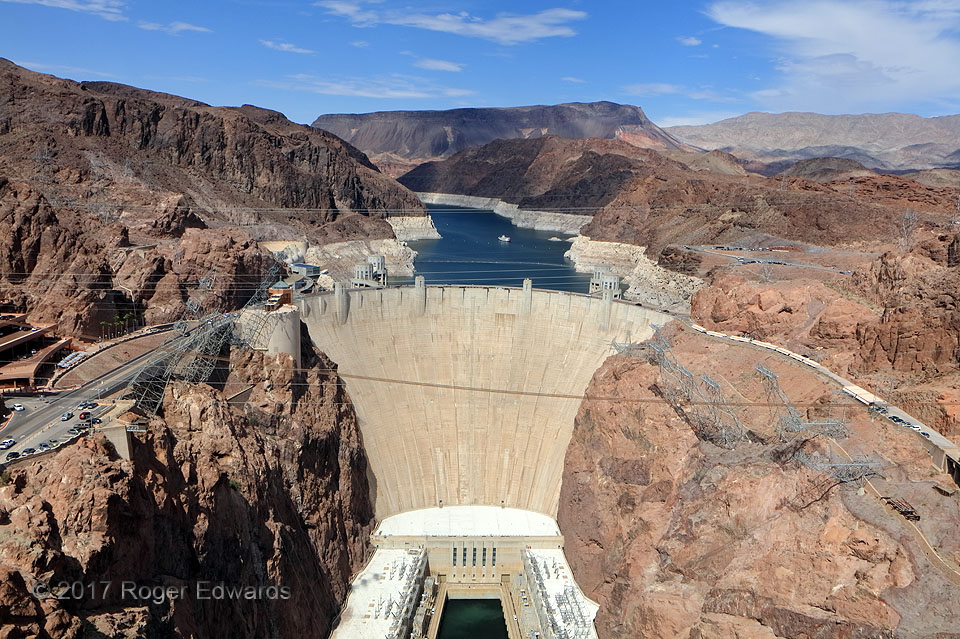Hoover Dam is nearly as much a marvel of engineering today as when it was finished in 1936—a 726-foot-high arch-gravity structure with a volume of 3-1/4 million cubic yards. The design efficiently transfers the water pressure’s force into the canyon walls, which consist of relatively young (Miocene), pink to buff and mauve-colored volcanic tuffs. Hydroelectric power sales subsidize dam maintenance. The reservoir it makes—Lake Mead—is the largest in the U.S. by full volume (not area), and supplies water for parts of Nevada, Arizona, southern California, and northwestern Mexico. The lake seldom is full anymore, nor even close. Evaporation and water demand have drawn lake levels at or near record lows for years, and below capacity since 1983. The “bathtub ring” of water-deposited, light-colored mineral stains above the lakeshore signify once-inundated higher surface elevations. This sweeping view astride a state line was not possible before the 2010 completion of the O’Callaghan/Tillman (Interstate 11) Bridge, 890 feet over the river, but perhaps from a helicopter flying at or below distance limits from the power cables.
6 NE Boulder City NV (3 Aug 17) Looking NE
36.0129, -114.7419
